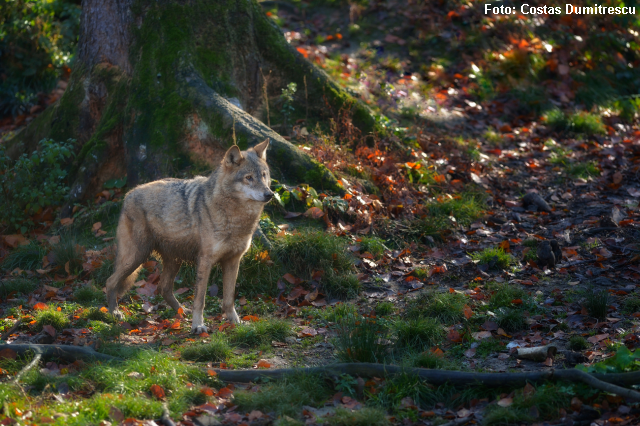Carpathian Wolves
Although Romania is home to Europe's largest wolf population, this species is endangered.

România Internațional, 29.01.2016, 13:33
Although Romania is home to Europe’s largest wolf population, this
species is endangered because of habitat fragmentation, poaching and improper
management. The lack of a national management plan and of concrete information
on the structure and dynamics of the wolf population may lead to improper
management, likely to impact this species in the long run. In order to maintain
a viable and healthy population of wolves in the
Carpathian Mountains in the long run, the Environment Protection Agency in
Vrancea, in collaboration with the Harghita and Covasna branches and a local
NGO, have been running a European project called ‘WolfLife’. The project is being
implemented over a period of 4 years,
until 2018, in the central and southern part of the Eastern Carpathians,
covering six counties. Although wolves are protected at domestic and
international level under a series of laws and conventions, such as the Berne
Convention, the Cites Convention, the European Directive and the Hunting Law,
wolves continue to be a threatened species. The WolfLife project however might
change that to some extent. Within a
year since the launch of the WolfLife project, a number of important data has
been collected about the life of wolves in the Carpathian Mountains.
Silviu
Chiriac with the Vrancea Environmental Protection Agency, a project manager and
expert in the protection of big carnivores, tells us more about the project: We have signaled,
first of all, the presence of stray dogs in the habitats populated by wolves,
as being a serious threat, because of diseases
and competition over food. Also, the important damages that wolves cause
to farms can lead to many conflicts between farmers and wolves to the detriment
of the latter. Then there is the negative image that this species has among the
rural and urban population, which is also likely to escalate conflicts in the
future. Given all these, we have decided to take concrete action in the
counties of Valcea, Bacau, Mures, Covasna, Harghita and Neamt, in order to
protect the wolves.
An inventory of the
wolf packs and an analysis of their habits, size and mortality rate have been
some of the actions taken under this project.
Silviu Chiriac: As regards the size of the territories and the
packs, we found out that the packs in the Carpathians are not as big as the
ones in the northern part of the American continent. In Romania, an average
pack is made up of 3 to 5 wolves in wintertime, while in the north of the
American continent a pack counts up to 24 members. The size of the pack is
directly linked with the food available, because in Romania the prey is not as
abundant as managers of the hunting areas say. Wolves feed on stray dogs, which
account for at least 20% of their diet. There could be two reasons for that: we
either have too many stray dogs in the forest, which is, as I have already said
before, a threat, or the other species that wolves feed on, such as hart, deer
and wild boar, are scarce.
The data collected
as part of the WolfLife project indicates that strays dogs and sheep dogs left
unsupervised in forests in Romania have a significant impact on wild life. To
solve these problems, sheep owners are advised to give up mixed breed dogs and
use instead traditional shepherd dogs. Silviu Chiriac explains: In March, the environment ministry in Romania will become, to my knowledge,
the first environment body in Europe to have its own kennel for breeding
traditional Carpathian shepherd dogs. This breed has been patented in Romania
and has been very efficient in sheep herding. The Carpathian shepherd dog is a
very docile type of dog that does not attack people and does not stray from the
sheepfold to attack wild animals. By breeding this dog, we try to help
shepherds. We intend to create a network of shepherd dog owners, each of whom
will receive from us a male and a female dog, free of charge. The shepherds
will be obliged by contract to support the dogs and donate the puppies to other
shepherds or dog owners. The network will thus expand.
The WolfLife project
also aims to achieve better cohabitation between the wolves and the locals,
says Silviu Chiriac: We have established a demonstrative area in six counties to show shepherds how
to reduce the damage to sheepfold caused by wolves, bears and lynxes. We have
given electric fences to six farmers from each of the six counties, as well as
sound and odour repellent systems to keep out the wolves. The farmers can use
these systems free of charge and starting next summer we will organise bus
trips for shepherds from other areas to see how these systems work and learn
how to keep out predators.
Wolves play an
important role in maintaining wild life viability and the perpetuation of
natural ecosystems of environmental, scientific and tourist importance. To end,
let us just note that the Romanian Carpathians are home to over 2,700 wolves.






























